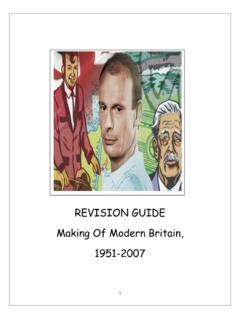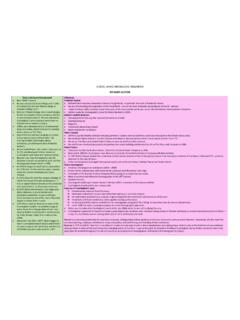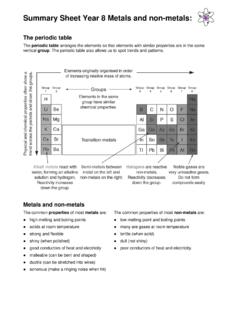Transcription of Dance Y9 Elements of Dance Word Bank - Turton School
1 Elements of Dance - Actions, Space, Dynamics and Relationships ACTIONS WHAT a dancer does eg travelling, turning, elevation, gesture, stillness, use of body parts, floor-work and the transference of weight. DYNAMICS HOW the dancer moves eg fast/slow, sudden/sustained, acceleration/deceleration, strong/light, direct/indirect, flowing/abrupt. SPACE WHERE the dancer moves eg pathways, levels, directions, size of movements, patterns, spatial design. RELATIONSHIPS WAY in which dancers move with other dancers eg lead and follow, mirroring, action and reaction, accumulation, complement and contrast, counterpoint, contact, formations.
2 CHOREOGRAPHIC DEVICES - how movement is manipulated to create choreography eg motif and development, repetition, contrast, highlights, climax, manipulation of number, unison and canon. STRUCTURING DEVICES and FORM, including: binary, ternary, rondo, narrative, episodic, beginning/middle/end, unity, logical sequence, transitions. AURAL SETTINGS what can be heard? (and how they affect choreographic outcomes), including: song, instrumental, orchestral, spoken word, silence, natural sound, found sound, body percussion.
3 Effects on choreographic outcomes: mood and atmosphere, contrast and variety, structure, relationship to theme/idea. PERFROMANCE ENVIRONMENTS, including: proscenium arch, end stage, site-sensitive (ie designed for non-theatre spaces), in-the-round. COMMUNICATION OF CHOREOGRAPHIC INTENT, including : mood(s), meaning(s), idea(s), theme(s), style/style fusion(s). FEATURES OF PRODUCTION including: staging/set eg projection, furniture, structures, backdrop, Screens and features of these such as colour, texture, shape, decoration, materials lighting eg colour, placement, direction, angles etc properties eg size, shape, materials, how used etc costume (including footwear, masks, makeup and accessories).
4 Features such as colour, texture, material, flow, shape, line, weight, decoration and how they define character or gender, identify dancers, enhance or sculpt the body and enhance the action dancers (number, gender) aural settings eg song, instrumental, orchestral, spoken word, silence, natural sound, found sound, body percussion, style, structure and musical Elements such as tone, pitch and rhythm Dance for camera eg placement, angle, proximity, special effects.







